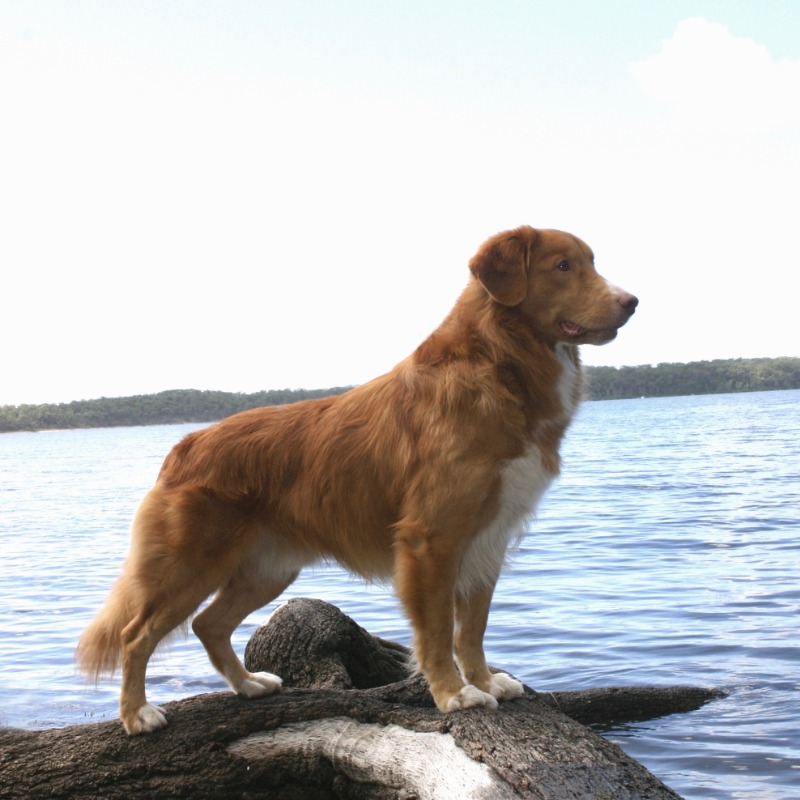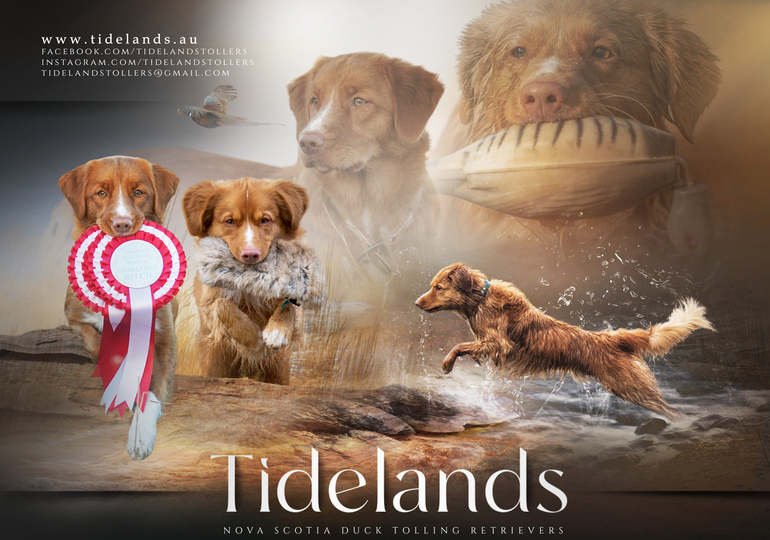Breeds
Nova Scotia Duck Tolling Retriever

GROUP 3 - GUNDOGS
Brief History
The Nova Scotia Duck Tolling Retriever, usually called a Toller, is the smallest and least known member of the retriever family. They were first developed in the Little River District of Yarmouth county, at the south-eastern tip of the Canadian province of Nova Scotia in the 1800’s, and were originally called the Little River Duck Dog.
Average Life Span
When considering a dog, please realise that you are taking it on for its lifetime.
The average life span is 12 to 14 years.
Temperament
The Toller is very easy to train and is a loyal companion and a great friend. Tollers have a friendly personality and make great companions, although they may be reserved with strangers. Their easy-going, fun-loving nature means they are well suited to families.
General Breed Description
The Toller is a medium-sized, powerful, compact, balanced, well-muscled dog with a high degree of agility, alertness and determination. He is highly intelligent and has great endurance. A strong and able swimmer, he is a natural and tenacious retriever on land and in water. The Toller is the only retriever that uses its fully feathered, thick tail to lure the duck. This is what tolling is. This breed excels in most dog sports including Obedience, Rally, Agility.
Tollers come in various shades of red or orange and usually have at least one of the following white markings: chest, feet, muzzle and tip of tail.
Coat and Care Requirements
The Toller has a medium-length, water-repellent double coat with a softer, dense undercoat. Grooming consists of frequent brushing and combing to remove dead hair to keep the undercoat free of mats. Further attention is required around the ears and feet to keep the dog looking neat. Tollers do shed, so frequent brushing is recommended.
Size
Height: Males 48 to 51cms (19 to 20ins), Females 45 to 48cms (18 to 19ins).
Weight: Males 20 to 23kgs (45 to 51lbs), Females 17 to 20 kgs (37 to 43lbs).
Health
All breeds have individual health issues. When speaking to breeders it is recommended you enquire about the breed’s health and what health testing the breeder does. The Nova Scotia Duck Tolling Retriever is generally a healthy breed, however health conditions do occur occasionally. These may include Hip Dysplasia (HD), Juvenile Addison’s Disease (JADD) and Progressive Retinal Atrophy (PRA). The following health tests are recommended: Ophthalmologist Evaluation to check for various eye conditions, Cardiac Exam.
Suitability
Because Tollers are very athletic and like to work and play hard, they require plenty of outdoor exercise. Tollers will ideally suit people/families with active lifestyles. They excel at most dog sports.
In Conclusion
Now you know a little more about this breed. If you have decided this is the dog for you and wish to investigate further, please contact the Breed Club or Dogs Victoria. They will be able to give you information about available puppies and also suggest dog events where you can see the breed and speak to breeders. In this way you will gain a better perspective of the breed and its needs. With any breed of dog, it is important to research and determine suitability for your lifestyle before committing to a puppy which will be a part of your family for many years to come.
Whilst many breeds are recommended for families, it is imperative that when children are with dogs they are supervised at all times. Basic obedience training is a vital part of dog ownership.
Dogs Victoria is about the responsible ownership of all dogs and in particular the preservation of pure breeds.
Link to Dogs Australia Breed Standard: https://dogsaustralia.org.au/breed/detail/121
Breeders





